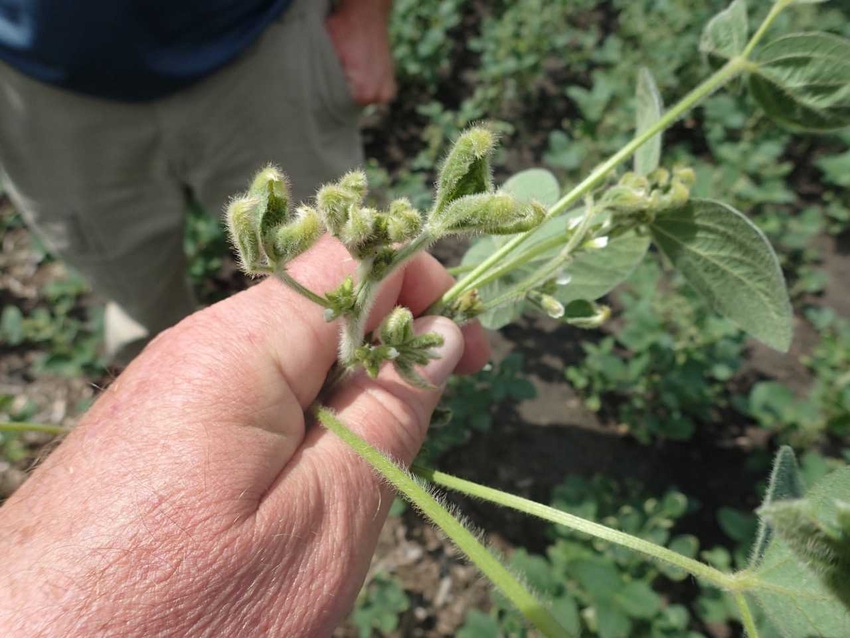June 12, 2018

Source: University of Minnesota Extension
By Ryan Miller, Extension educator
As we enter peak postemergence herbicide application season, there is an elevated risk for off target herbicide movement. Of particular concern is the movement of growth regulator herbicides onto soybeans. Growth regulator herbicides include products like 2,4-D and dicamba. These products cause leaf puckering, and epinasty or twisting of stems. Injury symptoms are most commonly observed on the newest most recent growth in soybeans.
Identifying the source of growth regulator injury can be difficult, since symptoms typically develop 10-14 days after exposure due to the low doses that occur in drift situations. Growth regulator herbicides are commonly used in corn and applications in corn could be a potential source of injury, but with the addition of dicamba tolerant soybeans to weed management, things have become more complicated. In addition to in-crop herbicide use and subsequent off-target movement, we need to be aware of several other causal agents that can mimic the symptoms of growth regulator herbicides.
Following is a short video highlighting the things to consider when investigating growth regulator plant injury in suspected off target herbicide movement situations:
Growth regulator off-target drift symptomology
You May Also Like




